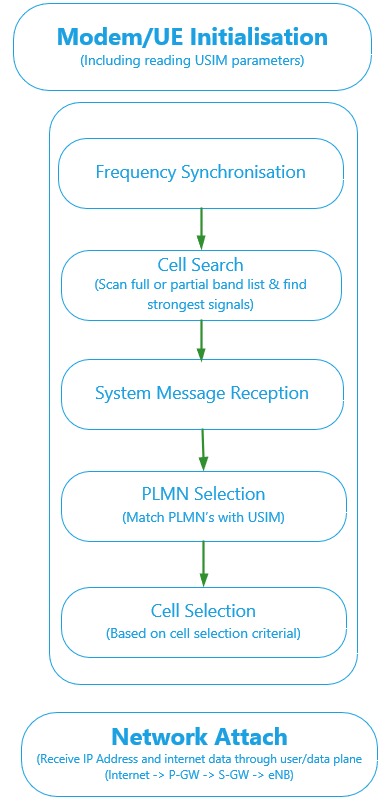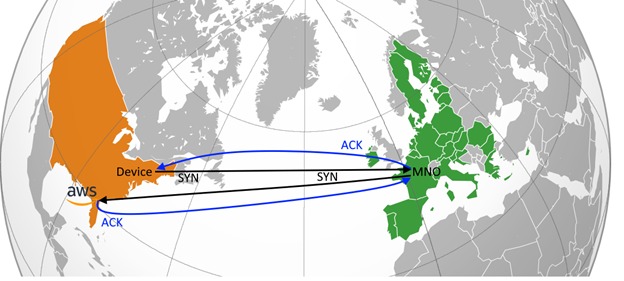
LTE latency
How picking an MVNO affects your IoT device battery life
In the past 5 years, new MVNOs (Mobile Virtual Network Operators) are cropping up in droves. With all the new entrants connectivity pricing is falling, tempting established companies to shop around for a better price, but there are other factors behind the scene that can severely hamper a product’s useful life. MVNO network architecture, and the devices’ cloud endpoints can create a continent criss-crossing network path that introduces extra latency in the system. Some applications can handle higher latency on user interfaces and telemetry data, but underlying negative effects on battery life may not be known until years after deployment when batteries die prematurely.
How it affects IoT device battery life
In a battery powered device, typically the cellular radio is the highest power consumer in the system, so every second of on-time counts against the battery life. When cellular devices connect to the network the first time in a given location, there can be significant on-time while the cellular radio searches for the network and achieves the initial attach, however subsequent power on/off attach times are reduced, so we’ll save that topic for a future post.

Today we focus on how the MVNO selection increases the system latency and how it impacts device battery life.
While the radio is attaching to the network and authenticating the SIM credentials, there are multiple back and forth transactions between the device and the cellular network radio access network. At the carrier there are multiple servers providing authentication, gateway, firewalling, and other services to the data traffic. Eventually the traffic reaches the public internet and then routes to the cloud endpoint to authenticate a secure link, and then start transmitting data.
Use cases
To minimize latency, and maximize battery life, we want all these systems to be in the same region to minimize the roundtrip traffic with minimal hops between systems. An example would be an IOT device in Boston, MA connects to Verizon LTE network, and uses it to send TCP traffic to Amazon’s AWS IOT Core platform. In this case, the device is in the Eastern part of the USA, Verizon has core infrastructure located in Eastern USA, and AWS has an Eastern USA control plane endpoint(iot.us-east-1.amazonaws.com). In this scenario, the network hops and latency should be minimized, allowing the device to turn on the radio, connect, send data, and disconnect in the least amount of time, maximizing battery life.
A more complex scenario that significantly increases latency and reduces battery life is the same device in Boston, MA connecting to an MVNO or roaming MNO located in Europe. Now the device authentication traffic hops from Eastern USA, across the Atlantic Ocean to a European cellular carrier’s core network, then back to Eastern USA AWS endpoint. A simple TCP SYN, SYN/ACK, ACK series now requires six trips across the Atlantic to establish a TCP session. Establishing a TLS session requires an additional eight trips across the ocean. The increased distance and extra server hops translates to higher latency, which is increased time the radio will be powered on thus draining the battery faster.
A quick test found it took about three times longer for a single SYN & ACK pair to hop across the pond vs. a regionally co-located solution.

Conclusion
The best solution to minimize latency is to co-locate the devices and vendors in the same region. The next best is to either co-locate the device & MNO, or co-locate the MNO & endpoint. The worst case is co-locating device and endpoint while the MNO traffic is routed to a different region.
If battery life is a key performance indicator for your IoT product, you should carefully evaluate MNO and MVNO options and take time to understand how device authentication and data routing occurs. Lastly consider the cloud endpoint and evaluate how quickly data can go to and from the MNO/MVNO to the endpoint. Some forward thinking MNOs understand this advantage and choose to co-locate data centers with cloud service providers making ultra-fast turnaround times.




























